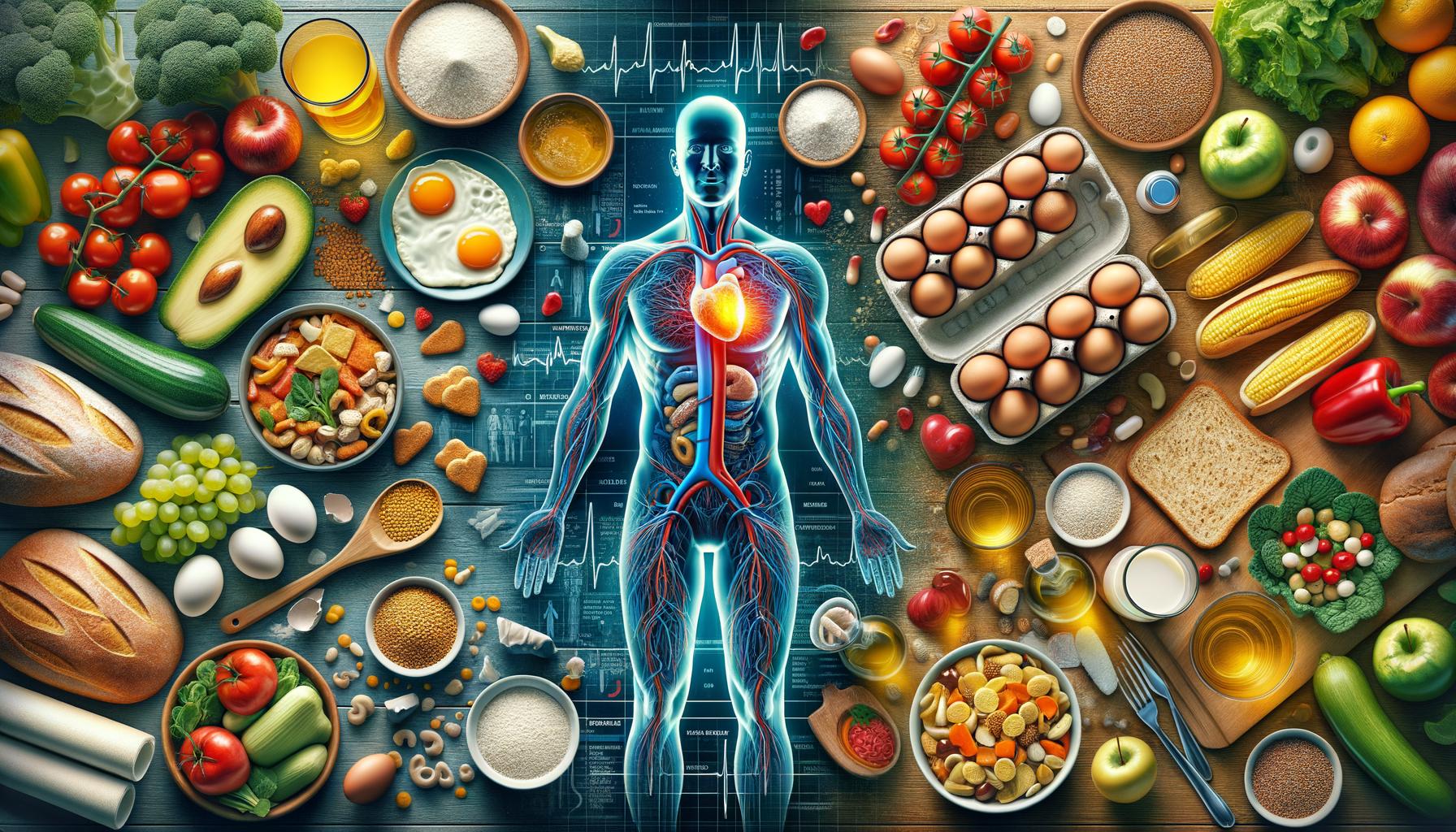· fitness · 16 min read
Unlocking HIIT's Power: Beyond Calories
Explore how High-Intensity Interval Training (HIIT) maximizes the Excess Post-Exercise Oxygen Consumption (EPOC) effect for improved health and accelerated fat loss, going beyond just burning calories.

In This Post
The Fact Why Should I Care How To Put In Action Start Tomorrow Guide How does it effect my ability to focus How does it impact my daily life How does it help me make friends How does it help me manage stress How does it effect my mood Summary: Remember Refresher Checklist The Full Research Article CitationsPrint Out The Tomorrow Checklist!
Sign up for our newsletter and receive a copy today, so that, you can start tomorrow! Or the next day, or the day after that. I forget everything and starting things is hard at least for me so these checklists are godsend.
Print Out The Remember Refresher Checklist!
Sign up for our newsletter and download your own copy of the Remember Refresher Checklist, so that, you can easily put it on your fridge and help you stay on target towards your WHY. Every little bit helps.
Introduction to HIIT and EPOC
Defining High-Intensity Interval Training (HIIT)
High-Intensity Interval Training (HIIT) has taken the fitness world by storm, hailed for its effectiveness and efficiency. At its core, HIIT involves short bursts of intense anaerobic exercise mixed with less-intense recovery periods. This unique blend not only amplifies your calorie expenditure but also significantly boosts your metabolic adaptations, making it a powerful component of your fitness regimen.
The primary allure of HIIT lies in its workout efficiency and its fit into modern, busy lifestyles. Unlike traditional long-duration exercise, HIIT packs a punch in considerably less time�making it an attractive option for those strapped for time but eager to improve their physical fitness trends.
Understanding Excess Post-Exercise Oxygen Consumption (EPOC)
A pivotal element that elevates HIIT�s effectiveness is Excess Post-Exercise Oxygen Consumption (EPOC), often dubbed as the �afterburn� effect. Post a HIIT session, your body continues to burn calories as it seeks to recover its pre-exercise oxygen levels. EPOC signifies the oxygen consumption post-exercise that translates into a metabolic rate increase, further enhancing caloric afterburn and promoting fat burning exercise benefits.
This afterburn phenomenon stems from the body’s need to:
- Replenish its oxygen reserves
- Clear out lactic acid buildup from muscles
- Repair muscle fibers and recover from the intense workout strain
EPOC turns your body into a fat-burning furnace post-workout, extending the benefits of your exercise session way beyond its duration.
The HIIT and EPOC Checklist:
- Understand the basic premise of HIIT and how it contrasts with traditional endurance training.
- Recognize the importance of EPOC in enhancing your fitness outcomes.
- Identify ways HIIT can be incorporated into your existing workout routine for optimized fat loss.
- Acknowledge the role of recovery and the body�s aerobic vs. anaerobic exercise responses in maximizing the benefits of your workouts.
Incorporating HIIT into your fitness regimen can exponentially improve your cardiovascular health, boost your metabolic rate, and enhance your endurance improvement efforts. By understanding the science behind HIIT and the remarkable after-effects of EPOC, you’re equipped to take your health and well-being to a whole new level. Stay tuned as we delve deeper into the science behind HIIT and EPOC, and how you can leverage these concepts to optimize your training intensity, achieve optimum fitness levels, and witness significant body composition changes.
The Science Behind HIIT and EPOC
How HIIT Works
High-Intensity Interval Training, or HIIT, is a fitness game changer. It’s not just a buzzword; it’s a scientifically proven method to enhance your health and fitness levels significantly. Imagine combining short bursts of high-intensity exercises with periods of rest or low-intensity activity. That’s HIIT in a nutshell.
But why does it work so well? First, it taps into both your aerobic (with oxygen) and anaerobic (without oxygen) energy systems. This dual approach ensures you’re not only improving your cardiovascular health but also your muscle strength and endurance. By pushing your body to its limits, even for just a few seconds, you trigger a variety of metabolic adaptations.
Here’s a simple checklist to ensure you’re doing HIIT correctly:
- Include exercises that push you to at least 80% of your maximum heart rate during the high-intensity intervals.
- Incorporate rests or low-intensity intervals to allow for recovery.
- Aim for a workout duration of at least 20 minutes to maximize benefits.
Through HIIT, you’re not just burning calories; you’re initiating a whole-body response that taps into fat stores, improves your cardiovascular system, and increases your metabolic rate.
The Role of EPOC in Weight Loss
Now, let’s dive into the concept of Excess Post-Exercise Oxygen Consumption (EPOC), often referred to as the ‘afterburn’ effect. After a HIIT workout, your body doesn’t just return to its normal state. Instead, it continues to consume oxygen at a higher rate than before to replenish oxygen stores, remove lactic acid, repair muscles, and restore ATP (energy) levels.
This process requires energy, meaning your body continues to burn calories long after your workout has ended. The intensity of HIIT means the EPOC effect is significantly higher compared to traditional, steady-state exercises. This is a critical factor for anyone looking to lose weight or improve their body composition.
EPOC effectively turns your body into a calorie-burning machine post-exercise, contributing to fat loss and an increase in muscle mass. This process is a key player in achieving optimum fitness levels and a leaner body.
Comparing EPOC in HIIT vs. Traditional Cardio
When comparing the effects of EPOC after a session of HIIT versus traditional cardio, the differences are clear. Traditional cardio exercises, like jogging or cycling at a steady pace, primarily focus on the aerobic energy system. While this is beneficial for improving aerobic endurance and cardiovascular health, it doesn’t quite produce the same level of EPOC as HIIT does.
HIIT’s intense bursts of exercise spike your heart rate, engaging more muscle groups and requiring your body to work harder to recover post-workout. As a result, the calorie expenditure and metabolic rate increase associated with EPOC are significantly higher after a HIIT session. This makes HIIT more effective for those aiming to maximize their weight loss strategies, improve body composition, and enhance overall physical fitness trends.
In summary, the science behind HIIT and its accompanying afterburn effect, or EPOC, highlights why this type of interval training has become a staple in modern fitness regimens. Its ability to provide a short burst training experience that leads to prolonged energy expenditure post-exercise positions HIIT as an optimal strategy for achieving and maintaining optimum fitness levels, making it a crucial component of weight loss and fitness strategies.
Benefits Beyond Calorie Burning
High-intensity interval training (HIIT) is more than just a tool for burning calories. Its positive impact extends to several facets of health and fitness, influencing everything from cardiovascular health to metabolic rate. Explore the multifaceted benefits of HIIT and understand why it’s considered a powerhouse in the fitness world.
Improved Cardiovascular Fitness
One of the standout benefits of HIIT is its ability to significantly enhance cardiovascular health. By alternating between high-intensity bursts and periods of rest or low-intensity exercise, you push the heart and lungs to adapt to varying demands. This not only increases your endurance but also improves your overall heart health. Engaging in HIIT can lead to:
- Enhanced oxygen uptake
- Lowered blood pressure
- Reduced heart rate during rest
Accelerated Fat Loss
While traditional exercises promote fat loss, HIIT accelerates the process. The intensity of the workouts encourages the body to burn fat for energy, tapping into fat stores more effectively than steady-state cardio. The caloric afterburn effect, thanks to EPOC, means you continue burning calories long after the workout has concluded. Key factors in HIIT’s fat-burning efficiency include:
- Increased metabolic adaptations
- Higher energy expenditure during and after workouts
- Optimum targeting of body fat as a fuel source
Enhanced Metabolic Rate
Another incredible benefit of regular HIIT sessions is the enhancement of your metabolic rate. Even outside of exercise times, your body will burn calories at a higher rate thanks to the metabolic adaptations induced by HIIT. This heightened metabolic rate is partly due to the body’s need to repair itself after the intensive exercise, a process that requires energy (calories). Benefits include:
- Continuous calorie burn day and night
- Improved efficiency in energy usage
- Faster metabolic responses to food intake
Shorter Workout Duration, Longer Benefits
One of the most appealing aspects of HIIT is its time efficiency. You can reap extensive health and fitness benefits from workouts that are significantly shorter than traditional cardio sessions. This allows for greater workout efficiency, making HIIT an ideal choice for those with busy schedules. Despite the shorter duration, the lingering benefits include:
- Sustained fat burning
- Prolonged cardiovascular improvements
- Lasting metabolic rate enhancements
Checklist for Maximizing the Benefits of HIIT:
- Plan your HIIT sessions to include a variety of aerobic and anaerobic exercises.
- Monitor intensity to ensure you are truly pushing your limits during high-intensity intervals.
- Allow for adequate recovery to facilitate the EPOC effect and avoid overtraining.
- Integrate HIIT into your fitness regimen 2-3 times a week for balanced benefits.
- Focus on your diet to fuel your workouts and recovery, optimizing fat loss and metabolic adaptations.
By embracing HIIT in your fitness regimen, you tap into a multitude of benefits that go beyond simple calorie burning. The improvements to cardiovascular health, accelerated fat loss, enhanced metabolic rate, and the efficiency of shorter workout durations make HIIT a versatile and powerful approach to fitness. Whether you’re looking to improve your endurance, lose weight, or simply optimize your health, incorporating HIIT can lead to significant, lasting improvements in your physical well-being.
Implementing HIIT for Maximum EPOC
In the world of fitness, the right approach can make all the difference, especially when it comes to HIIT (High-Intensity Interval Training). Proper implementation of HIIT not only ensures safety but also maximizes the benefits of Excess Post-Exercise Oxygen Consumption (EPOC), which is crucial for those looking to enhance their metabolic rate increase, achieve weight loss, and improve cardiovascular health. Let’s explore how to design your HIIT workouts effectively, adhere to safety tips for beginners, optimize routines for EPOC, and avoid common mistakes.
Designing Your HIIT Workout
To fully harness the power of HIIT and EPOC, your workout must be structured with care. Begin with a warm-up to prepare your body, followed by alternating sessions of high-intensity exercises and recovery periods. Ensure these workouts incorporate a variety of movements to target different muscle groups and promote overall fitness. Here�s a checklist for an ideal HIIT session:
- A 5 to 10-minute warm-up with dynamic stretches or light jogging
- Intervals of high-intensity exercises (like sprinting, jumping jacks, or burpees) lasting from 20 to 60 seconds
- Low-intensity recovery periods (like walking or slow jogging) of equal or longer duration than the high-intensity phases
- A 5 to 10-minute cool-down with stretching to aid recovery
By adhering to this structure, you engage in both aerobic and anaerobic exercise, stimulating metabolic adaptations that contribute to fat burning and endurance improvement.
Safety Tips for HIIT Beginners
HIIT, by nature, demands a lot from your body. Hence, safety must come first, particularly for beginners. Here are some tips to keep in mind:
Start Slow: Gradually increase intensity and duration as your fitness level improves. Jumping into the deep end too soon can lead to injury or burnout.
Listen to Your Body: Pay attention to the signals your body sends. If you feel undue pain or discomfort, take it as a sign to ease up or rest.
Seek Professional Guidance: If possible, work with a fitness professional who can provide personalized advice and adjustments to your routine.
Optimizing Your HIIT Routine for EPOC
Maximizing EPOC requires strategic planning of your HIIT workouts. The goal is to push your body to a point where it continues to consume oxygen at a higher rate post-exercise, leading to greater caloric afterburn. This can be achieved by:
Varying Your Workouts: Change your routine regularly to prevent plateaus and keep your body guessing.
Including Full-Body Movements: Exercises that engage multiple muscle groups will increase your energy expenditure and impact on EPOC.
Monitoring Your Effort: Use heart rate monitors or perceived effort scales to ensure you’re working in the right intensity zone for EPOC enhancement.
Common Mistakes to Avoid in HIIT
To ensure your efforts are fruitful, be wary of these common pitfalls:
Skipping Warm-Up and Cool-Down: Neglecting these can increase your risk of injury and hamper your recovery process.
Doing HIIT Every Day: Your body needs time to recover. Incorporating rest or lower-intensity workouts between HIIT sessions is crucial for optimum fitness levels and avoiding fatigue.
Ignoring Nutrition: Proper fueling before and after workouts supports energy levels and recovery. Neglecting nutrition can undermine your progress and well-being.
Implementing HIIT with an emphasis on maximizing EPOC can significantly enhance your metabolic rate, promote fat loss, and improve your cardiovascular health. By designing your workouts carefully, adhering to safety guidelines, optimizing routines for EPOC, and steering clear of common mistakes, you’ll be well on your way to reaping the full benefits of this dynamic approach to physical fitness.
FAQs (Based on “People Also Ask” Section from Google)
As we dive deeper into unlocking the power of High-Intensity Interval Training (HIIT) and the Excess Post-Exercise Oxygen Consumption (EPOC) effect, several common questions often arise. Let’s tackle some of these frequently asked questions to provide clarity and help you make the most out of your HIIT workouts.
How Long Does EPOC Last After a HIIT Workout?
One of the most intriguing aspects of HIIT is the prolonged caloric afterburn known as EPOC. After a HIIT session, your body continues to consume oxygen at an elevated rate to return to its pre-exercise state. This process can last anywhere from a couple of hours to more than a day, depending on the intensity and duration of your workout. During this period, your metabolic rate increases, leading to continued calorie burning.
- EPOC duration can vary but often lasts:
- 12-24 hours for moderate to vigorous HIIT sessions.
- Up to 48 hours following particularly intensive workouts.
Can Everyone Benefit from HIIT and the EPOC Effect?
HIIT and the resultant EPOC effect offer numerous health and fitness benefits, ranging from accelerated fat loss to improvements in cardiovascular health. However, it’s essential to assess individual fitness levels and health conditions before diving into HIIT routines.
- Here’s a quick checklist to consider if HIIT is right for you:
- No existing heart conditions without medical clearance.
- Adequate baseline physical fitness.
- No severe joint or mobility issues.
- A willingness to push yourself out of your comfort zone.
While most people can safely engage in HIIT with proper guidance and gradual progression, those with specific health concerns should consult a healthcare provider before starting any high-intensity exercise program.
How Often Should You Do HIIT for EPOC Benefits?
To maximize the benefits of EPOC and overall HIIT effectiveness, frequency and consistency are key. Nonetheless, due to the high-intensity nature of these workouts, allowing adequate recovery time is equally important to prevent overtraining and injury.
- For optimal results, consider the following frequency guidelines:
- Beginners: Start with 1-2 HIIT sessions per week to allow your body to adapt.
- Intermediate to Advanced: 3-4 HIIT sessions per week, spaced out to include recovery days.
- Recovery and Rest: Ensure at least one full day of rest between sessions to support recovery and muscle repair.
Incorporating HIIT into your fitness regimen can significantly enhance your metabolic rate, cardiorespiratory health, and overall physical fitness. However, listening to your body and adjusting your training frequency based on your recovery and fitness levels is crucial.
By addressing these FAQs, we hope to have shed light on how EPOC works alongside HIIT, its benefits, and how best to incorporate HIIT workouts into your routine for maximum fitness gains. Remember, your journey towards optimum fitness and health is unique, and tailoring your workout regimen to suit your individual needs and goals is vital for success.
Conclusion
Throughout this article, we’ve delved deep into the world of High-Intensity Interval Training (HIIT) and Excess Post-Exercise Oxygen Consumption (EPOC), breaking down how these powerful concepts work hand in hand to offer extraordinary benefits beyond simple calorie burning. HIIT, characterized by its short bursts of intense exercise followed by brief recovery periods, not only optimizes your workout efficiency but also catapults your metabolic rate increase, contributing significantly to weight loss strategies and overall health and well-being.
EPOC, often referred to as the caloric afterburn effect, further enhances the benefits of HIIT by continuing to burn calories well after your workout session has ended. This process is a result of your body’s need to return to its pre-exercise state, repairing itself and adapting to the intense exercise you’ve just completed, thus burning more calories in the process.
Recap of HIIT and EPOC Benefits
The synthesis of HIIT and EPOC yields numerous benefits, including but not limited to:
- Improved Cardiovascular Health: Enhanced heart health through intense workouts.
- Accelerated Fat Loss: Increased calorie burn and fat loss, even after the exercise is over.
- Enhanced Metabolic Rate: A boosted metabolism that continues beyond the workout.
- Workout Efficiency: Achieve more significant health benefits in shorter periods.
Encouragement to Incorporate HIIT into Your Fitness Routine
Given the extensive benefits outlined, we strongly encourage you to consider incorporating HIIT workouts into your fitness regimen. Whether you’re looking to improve your endurance, lose weight more effectively, or simply switch up your exercise routine for something more dynamic, HIIT is a versatile and efficient option.
Getting Started: A Simple Checklist
To help you get started, here�s a simple checklist:
- Consult with a Professional: Always check with a healthcare provider or a fitness instructor before starting any new workout regimen, especially if you have underlying health conditions.
- Start Slow: If you�re new to HIIT, begin with workouts that are manageable for your current fitness level and gradually increase the intensity.
- Stay Hydrated: Intense workouts mean more sweat and a higher need for hydration.
- Incorporate Rest Days: Rest is just as crucial as the workouts themselves. Ensure you’re allowing your body time to recover.
- Track Your Progress: Keep a log of your workouts and any changes in your fitness level or body composition. This can be motivating and informative.
In essence, HIIT, closely intertwined with EPOC, offers a promising avenue for those aiming to amplify their fitness outcomes. The dynamic duo of intense physical activity followed by extended calorie burning presents an efficient strategy for improving physical fitness, shedding fat, and enhancing overall health. By making HIIT a staple in your exercise science arsenal, you’re not just working smarter rather than harder�you’re also setting the stage for optimum fitness levels and a healthier future.
3 Relevant External Links
In the world of fitness and weight loss, High-Intensity Interval Training (HIIT) along with the Excess Post-Exercise Oxygen Consumption (EPOC) effect stand out as efficient strategies. They not only enhance metabolic rate increase and accelerate fat burning but also improve cardiovascular health through short burst training. To deepen your understanding and application of these concepts, here are three valuable resources:
American College of Sports Medicine on HIIT - This link takes you to the ACSM guidelines for high-intensity interval training. The American College of Sports Medicine is a trusted authority in the domain of exercise science and physical fitness trends. By following these guidelines, you can ensure that your HIIT workouts are effective, safe, and align with the latest scientific insights.
PubMed Central on the Effects of Exercise Intervals - For those interested in the scientific underpinnings of EPOC and interval training, this destination offers a wealth of research articles. PubMed Central is a free full-text archive of biomedical and life sciences journal literature, providing credible information on how exercise physiology factors into health and well-being and how interval training can maximize caloric afterburn.
Harvard Health Publishing on Exercise and Weight Loss - Offering Harvard’s perspective on HIIT for weight loss, this resource dives into the benefits of incorporating high-intensity training into your fitness regimen for both weight loss strategies and aerobic vs. anaerobic exercise benefits. Harvard Health Publishing provides insights from medical professionals on how to achieve optimum fitness levels and body composition changes through exercise.
Maximizing Your Learning from These Resources:
Checklist for Efficient Learning:
- Start with the ACSM guidelines to build a strong foundation for HIIT principles and safety.
- Dive into PubMed Central�s research articles to understand the science behind EPOC and how interval training influences energy expenditure and metabolic adaptations.
- Explore Harvard Health Publishing�s insights for practical advice on integrating HIIT into your routine, with a focus on exercise science and effective weight loss strategies.
- Apply the learned concepts by slowly incorporating them into your fitness regimen, observing how your body responds.
- Keep educating yourself and stay updated with the latest research to refine your approach and maximize EPOC benefits.
Harnessing the power of interval training and understanding oxygen consumption post-exercise are pivotal in achieving fitness and weight loss goals. Whether you’re a beginner or looking to elevate your workout efficiency, these external links provide a gateway to enhancing your physical fitness trends knowledge. Remember, the journey toward health and well-being is continuous, and staying informed is key to navigating it successfully.





